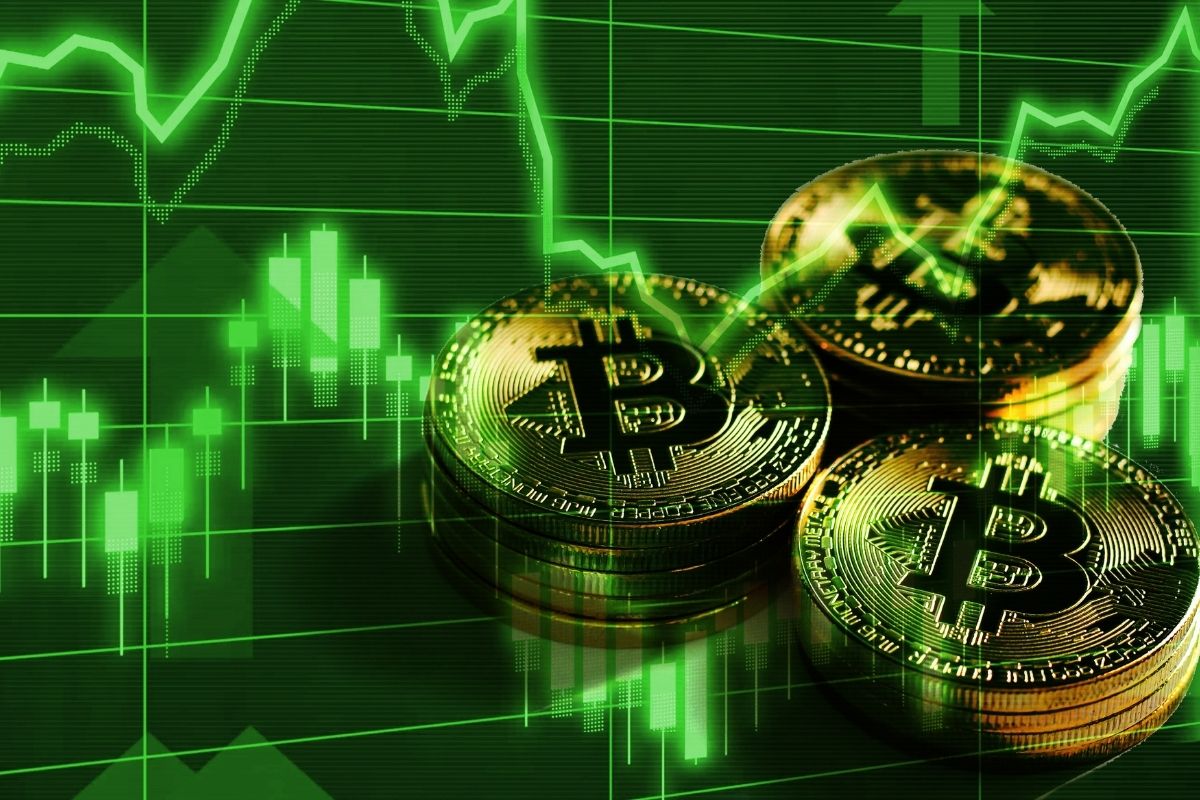Will Inflation Increase Global Bitcoin Adoption?
- May 30, 2022
- Jennifer Moore

The Fed Reserve’s decision to impose one of the highest interest rates post-pandemic laid the foundation for inflation at levels unprecedented since 2008. The high inflation has the global spotlight on cryptocurrencies with traders sticking to the performance of inflationary hedges. The stablecoin crash, combined with falling valuations of basically all virtual assets may have detracted investors for the time being. But, global economic and geopolitical conditions will simply lead to the further adoption of cryptocurrencies, particularly Bitcoin.
Is Bitcoin Good for Asset Diversification in Crypto Bear Markets?
Inflation poses a consistent risk to fiat valuation. This is one of the primary reasons behind investors opting to protect their assets through asset investments. While gold has been the traditional hedge option against inflation, Bitcoin and other cryptocurrencies had been steadily gaining momentum over the past few years. If we consider the year 2021, Bitcoin rose 125% while gold fell 8% on a year-to-date basis. In fact, JP Morgan analysts acknowledged that Bitcoin’s previous year’s rise was mainly driven by a notion that it is better than gold as a hedge against inflation.
Bitcoin, the first cryptocurrency, still remains the predominant leader in the crypto market share. A notable section of the global industry leaders has been voicing their support for the crypto, which surpassed PayPal in global payment transactions the previous year. The digital asset has also been accepted by multiple nations- some have even moved forward to declare “legal tender” status. Legacy payment processing services like VISA and Mastercard have already started accepting payments in crypto, in addition to multiple global banking corporations.
Also Read: The Significance of Inflation and the Subsequent Political Impact on Bitcoin Prices
The Russian Equation
The Russian invasion of Ukraine led to the USA, EU, and SWIFT banning the Ruble, along with multiple Russian banks. SWIFT’s decision, in particular, led to a large change in the geopolitical scenario, with multiple factors at play. To start things off, Russia is one of the leading global energy suppliers, and its energy is indispensable for European nations at present.
China offered its aid to Russia through the CIPS system for cross-border payment settlement. However, the response has been lukewarm at best. Furthermore, Russia asking for its resource export payments to settle in the Ruble puts a challenge to the USD hegemony. All in all, the entire scenario translates to a promising situation for crypto adoption among other nations, particularly those who wish to avoid the crossfire.
Also Read: Ukraine Unveils NFT Museum To Raise Funds for Relief and Resistance
Falling Bitcoin Valuations
No cryptocurrencies, including Bitcoin, have been totally immune to the effects of inflation. Bitcoin touched an all-time high in November 2021 but is trading at less than half of its then volume, currently at below $30k. The world’s largest crypto is gathering support and resistance across the $30k mark, and market analysts are pretty optimistic about its revival. In fact, several experts are recommending the present Bitcoin valuations to be the best time for buying Bitcoin. The same can however not be said about stablecoins which were supposed to be more stable, being pegged to fiat denominations.
The Significance of the Inflation for Crypto
Inflation is the Chance for Cryptos To Prove Their Worth as an Alternative Asset Class
Raj Chowdhury, PayBitoPro CEO.
If long-standing, high fiat inflation will lead to increased digital asset investments, fiat denominations will be losing their valuation. Popular cryptocurrencies like Bitcoin and Ethereum are an attractive investment options. Withstanding crypto volatility may be an issue, but there are several other factors that will be determining crypto market economics. The noticeable ones include:
a. Bitcoin can never be a subject to government manipulation.
b. Being a digital asset, it is easier to store or transfer Bitcoin in comparison to gold.
c. The Bitcoin blockchain network is secure through the PoW consensus mechanism. There are additional measures in check too. The total number of Bitcoins will forever cap at 21 million. Thereafter, of which 19 million are already mined. At present, a new “block” is under process by miners within 10 minutes following the addition of 6.25 BTC within the network. The next halving(3.125 BTC mining rewards) will occur in 2024.
d. The time-sensitive tapered Bitcoin supply is programmed, fixed, and predictable.
Wrapping Up
The high volatility of crypto valuations reflects their deficiency in the consistency required to overtake inflation. The present inflation is a direct consequence of the global pandemic with disruption in supply chains and labor force restrictions leading to price hikes. WFH situations also contributed to increased demands. The inflation is persisting longer than the expectations of financial experts. Like cryptocurrencies, traditional inflation hedges such as gold have failed to deliver as well. There is no doubt cryptocurrencies and blockchain will become a mainstay in future transactions. A measured approach is probably what’s best for now, though current market valuations present a great Bitcoin investment opportunity.
Categories
- AI (6)
- Altcoins (10)
- Banking (10)
- Bitcoin (133)
- Bitcoin ETF (11)
- Bitcoin Price (30)
- Blockchain (47)
- Brokering World Hunger Away (16)
- Business (8)
- CBDC (11)
- COVID-19 (3)
- Crypto ATMs (1)
- Crypto Banking (15)
- Crypto Bill (1)
- Crypto broker platform (26)
- Crypto Investment (3)
- Crypto Markets (3)
- Crypto Payment (28)
- Crypto Prices (1)
- Crypto Trading (90)
- Cryptocurrency (372)
- Cryptocurrency Exchange (103)
- Data Visualization (2)
- Decentralized Finance (7)
- DeFi Payment (9)
- DEX (3)
- Digital Currency (22)
- Ethereum (2)
- FAQ (6)
- Finance (24)
- Financial Equality (4)
- Financial Freedom (8)
- Forex (24)
- ICO (1)
- Investment (11)
- Mining (3)
- News (66)
- NFTs (2)
- P2P (1)
- PayBitoPro (630)
- PayBitoPro Coin Listing (6)
- PayBitoPro Exchange (2)
- Post COVID Digital Transformation (1)
- Press Release (130)
- Privacy & Security (3)
- Real Estate (1)
- Stablecoin (4)
- Technology (14)
- Uncategorized (3)
- US Presidential Election (2)
- Utility Coin (1)
- Web3 Wallets (1)
- White Label Crypto Broker Solution (1)
- White Label Crypto Exchange (6)
Recent Posts
- The Evaluation and Analysis of New Cryptocurrencies
- Why Are the Cryptocurrency Payment Systems in Business Becoming Popular?
- The Prevalent Crypto Trends That You Must Not Miss
- The Affiliate Business Model Is Highly Beneficial For New Users
- Online Income Sources Are Becoming A Preferable Choice For Many





